Implicit Bias Module Series for Child Welfare
Implicit Bias Module Series for Child WelfareWelcome
Welcome to the Kirwan Institute for the Study of Race & Ethnicity’s Implicit Bias Module Series for Child Welfare. At the Kirwan Institute at The Ohio State University, we are committed to the creation of a just and inclusive society, where all people and communities have the opportunity to succeed. Our commitment to this mission is why we work so hard to understand and overcome barriers that prevent access to opportunity in our society, such as implicit bias and racial disparities in our education system.
This course will introduce you to insights about how our minds operate and help you understand the origins of implicit associations. You will also uncover some of your own biases and learn strategies for addressing them. Each module is divided into a short series of lessons, many taking less than 10 minutes to complete. That way, even if you’re pressed for time, you can complete the lessons and modules at your convenience.
We are excited that you are starting this process to explore implicit bias and what its operation means for your decisions and actions. Thank you for joining us!
A video transcript for this training is available here.
About Us
The Kirwan Institute for the Study of Race and Ethnicity is an interdisciplinary engaged research institute at The Ohio State University established in May 2003. As a racial equity research institute, our goal is to connect individuals and communities with opportunities needed for thriving by educating the public, building the capacity of allied social justice organizations, and investing in efforts that support racial equity and inclusion. Here at the Kirwan Institute, we do this through research, engagement, and communication.
Accessing the Videos
If you experience technical difficulties accessing the videos embedded in this module series, consider switching your browser to Chrome or Microsoft Edge.
About CSSP
About CSSPThe Center for the Study of Social Policy (CSSP) is a national non-profit, and since its founding more than 40 years ago, has been at the forefront of our nation’s most significant reforms in child welfare and family support services, combining rigorous standards for policy analysis and nurturing innovation in communities. We believe that our collective efforts will dramatically shift our nation toward a more fair, just, and equitable society, by focusing on several key priorities, including:
- Developing a strong national anti-poverty policy that centers equity.
- Ensuring that all young children get a great start in life by advancing local early childhood systems and parental leadership.
- Building public systems that empower all youth and link them to opportunities.
- Creating a national child welfare system that is fair, equitable, and effective.
- Generating evidence about the power of communities and marginalized people to lead and achieve lasting change.
Many CSSP staff contributed to the development of these online modules and the in-person training, and we would like to thank them for their efforts.
Contributors
- Gayle Samuels
- Leonard Burton
- Kristen Weber
- Juanita Gallion
- Alexandra Citrin
- E Feinman
- Maya Pendleton
- Lisa Primus
- Tashira Halyard
Consultants
- Cheryl Samuels Campbell
- Sandra F. Fowler
The development of inSIGHT: Exploring Implicit Bias in Child Protection was funded in part by the Annie E. Casey Foundation. We thank them for their support but acknowledge that the findings and conclusions presented in this curriculum are those of CSSP alone, and do not necessarily reflect the opinions of the Foundation.
About Kirwan
About KirwanThe Kirwan Institute for the Study of Race and Ethnicity is an interdisciplinary engaged research institute at The Ohio State University established in May 2003. As a racial equity research institute, our goal is to connect individuals and communities with opportunities needed for thriving by educating the public, building the capacity of allied social justice organizations, and investing in efforts that support racial equity and inclusion. Here at the Kirwan Institute, we do this through research, engagement, and communication.
The Race and Cognition team at the Kirwan Institute would like to give thanks to all of those involved in the process of creating and launching the Online Implicit Bias training. Countless hours have been dedicated to the creation of the modules and we do not take that for granted. There are several people we would like to show an additional level of gratitude to:
Contributors
- Kelly Capatosto
- Lena Tenney
- Joshua Bates
- Kyle Strickland
- Robin Wright
- Cheryl Staats
- Preshuslee Thompson
- Ashley Wilson
- Jason Duffield
- Kip Holley
- Rachel Besse
- Karima Samadi
- Amy Malcolm
- Jillian Olinger
- Glennon Sweeney
- Leigha Grosh
- Jocelyn Smallwood
Acknowledgments
- The Schott Foundation for Public Education
- Mills James Production
- Sharon Davies
- Kathy Lechman
- Art James
- Christy Rogers
- Jason Reece
- Tara McCoy
- Jamaal Bell
- Donnie Perkins
- La’Tonia Stiner-Jones
- Zach Kenitzer
- Sheeba George
- Alicea Kouyate
- Mary McKay
- Darrick Hamilton
- Ashley Wilson
- Faduma Hasan
Special thanks to the entire staff at The Kirwan Institute for the Study of Race and Ethnicity—thank you so much for your dedication to this work and your everyday efforts to make the world a more just and inclusive society. We appreciate you!
Frequently Asked Questions
Frequently Asked QuestionsWhy focus on implicit rather than explicit bias?
Although our modules focus primarily on implicit bias, Kirwan and CSSP acknowledge that inclusion and equity efforts must also address explicit bias and discrimination in order to create real change. Our explicit and implicit attitudes are related constructs, and many times peoples’ implicit and explicit attitudes are in alignment.
However, even though concepts are related, they are distinct. Someone can act in a biased manner based on their implicit associations, even if they do not indicate an explicit preference for certain individuals or groups. Learning about implicit bias provides a lens to help examine the causes of racial, gender, or other social disparities, even in the absence of explicit intent to discriminate or cause harm.
How long will it take me to complete these modules?
While everyone works at a different pace, these modules should take participants roughly 45 minutes to 1.5 hours to complete, depending on the time spent on activities and supplemental exercises.
Are these modules supported by research?
Yes. The methods and research shared in these modules is supported in part by Kirwan’s annual flagship publication, the State of the Science Implicit Bias Review. Each year, Kirwan researchers compile studies on the subject of implicit bias into an interdisciplinary literature review in a format that is accessible and easy to understand from a wide range of academic and professional backgrounds.
Additionally, the child welfare historical content is supported by and adapted from “A Historical Overview: Timeline of Child Welfare and Youth Justice Systems—Racial and Ethnic Focus” from The W. Haywood Burns Institute for Justice Fairness and Equity. National data on racial disparity and disproportionality is based on 2017 Census Data and data reported by states through the Adoption and Foster Care Analysis Reporting System (AFCARS) and represents point in time data as of the last day of the fiscal year (September 30, 2017). Additional child welfare content is provided by child welfare experts from the Center for the Study of Social Policy (CSSP) and can be found in publications from CSSP, including: Achieving Racial Equity: Child Welfare Strategies to Improve Outcomes for Children of Color and Prevent, Protect, & Provide: How child welfare can better support low-income families.
Does implicit bias reflect my beliefs about equity or inclusion?
We will get more into this during Module 1, but our implicit preferences do not necessarily align with our explicit beliefs. For example, one can believe in equality of all people and still hold a pro-self-identity bias. Importantly, some people possess implicit attitudes that do not align with their own held identities.
If I didn’t intend to be biased in the first place, how will learning about implicit bias help?
Becoming aware of what biases you possess and the decisions that are most likely to be influenced by our unconscious processing can help you build interventions and strategies to prevent the expression of bias and unwanted outcomes. Our training also includes information about empirically based interventions to both reduce the expression of bias and alter the associations we possess.
What is the connection between implicit bias and how people act?
Implicit bias has been shown to impact decision-making across a wide array of sectors, including employment, medicine, and education. However, there are limitations to the extent to which unconscious biases can predict individual behavior. People with an implicit preference for one identity may not act on this bias or make biased decisions, much of this depends on the circumstance.
Does this training apply to me if I don’t have implicit bias?
We will touch on this during the modules, but because biases can be activated across a wide range of identities, we all hold some implicit preferences. Even people without an implicit preference can still act in ways that produce discriminatory behavior, such as not speaking up when they see bias in their environment. This need to translate knowledge into action is why Kirwan and CSSP also emphasize the importance of being an active bystander.
Will these modules eliminate bias?
These modules are not designed to eliminate bias. Rather, we hope that an awareness of implicit bias and how it operates will help participants engage in more equitable decision-making practices and behaviors. These strategies to reduce the expression of bias are only one piece of the puzzle and should be complemented by policies and strategies to address institutional and explicit discrimination.
I’m not in a child welfare profession, are these modules for me?
This module series includes examples and activities that are uniquely tailored to the experience of those who work in a child welfare setting or a closely related field. However, much of the content in Modules 1, 3, and 4 are generalizable enough to apply to most audiences.
Training intro video
Training intro videoModule 1: Understanding Implicit Bias
Module 1: Understanding Implicit BiasIn this first module, you will be introduced to the basics of implicit bias:
- What is meant by “implicit” or “unconscious” associations or biases?
- How are implicit biases different from explicit biases?
- What does it look and/or feel like when implicit associations operate?
- How do our biases form?
- Why does all of this matter?
You are encouraged to complete each lesson in order and at your pace. Each lesson is followed by a quick check-in question that will help us gauge your understanding thus far.
We hope you enjoy this first module!
Lesson 1.1: What is Implicit Bias?
Lesson 1.1: What is Implicit Bias?Lesson 1.2: Implicit Bias in Action
Lesson 1.2: Implicit Bias in ActionLesson 1.3: Origins of Our Bias
Lesson 1.3: Origins of Our Bias
Module 1: Recap and Quiz
Module 1: Recap and QuizModule 1: Recap
- Implicit bias operates outside of our conscious awareness.
- Implicit bias is unconscious, automatic, and relies on associations that we form over time.
- We can form bias toward groups of people based on what we see in the media, our background, and experiences.
- Our biases reflect how we internalize messages about our society rather than our intent. Nevertheless, we can still act on our biases in ways that can harm others.
Key Concepts and Definitions in Module 1
- Implicit Bias: It refers to the attitudes or stereotypes that affect our understanding, actions, and decisions in an unconscious manner. Implicit bias does NOT refer to beliefs we conceal or suppress in an effort to appear non-biased.
- Attitudes: The evaluation of a specific object or entity. These evaluative feelings can range from positive to negative, or neutral towards a subject.
- Bias: A systematically oriented evaluation or belief about an object, person, or concept. Biases can be neutral, positive, or negative.
- Implicit: Operating outside of our conscious awareness.
- Stereotypes: Beliefs that are mentally associated with a given category, regardless of whether they are factually accurate.
- Associative learning: Our brain's ability to make connections between two separate concepts.
- Formation of implicit bias: Implicit bias can be shaped by learning associations between particular qualities and social categories, such as race and/or gender, through direct lived experiences or indirect exposure to one’s physical and media environments.
Module 1: Check-in
Module 2: Real World Implications
Module 2: Real World ImplicationsLesson 2.1
Lesson 2.1Lesson 2.2
Lesson 2.2Module 2: Recap and Quiz
Module 2: Recap and QuizModule 2: Recap
- Implicit bias can turn even our best intentions into unwanted outcomes.
- The racial disparities and disproportionalities that exist today are a result of not only racist attitudes and policies in the past—such as slavery, attempted genocide and violent assimilation of Native American people, or the War on Drugs—but also because of the ways racism persists and is perpetuated in the present. Implicit bias, which can be mitigated, also contributes to these disparities and disproportionalities.
- Implicit bias plays out in our actions and behaviors, which is important for child protection workers to be aware of since they are making life-long decisions regarding the lives of children and families.
- If child protection workers aren’t aware of their biases it can impact the delivery of services and the implementation of policies and practices. Some of the decision-making points that can be impacted by bias include:
- Referrals to hotline
- If a case is referred, screened-in, investigated, or substantiated.
- If a case is open and a child is removed
- If kinship care is explored and approved as foster care placement.
Module 2 Check-in
Module 3: Understanding Your Own Biases
Module 3: Understanding Your Own BiasesLesson 3.1: How do We Measure Our Implicit Associations?
Lesson 3.1: How do We Measure Our Implicit Associations?Lesson 3.2: What is the IAT?
Lesson 3.2: What is the IAT?Lesson 3.3: Learn Your Biases (IAT)
Lesson 3.3: Learn Your Biases (IAT)Take the IAT!
- You can find out your own biases by taking an implicit association test at: https://implicit.harvard.edu/.
- All tests are free and take roughly 5 minutes
- Try taking 2–3 tests and reflect on your results
Lesson 3.4: Understanding Your Results
Lesson 3.4: Understanding Your ResultsModule 3: Recap and Quiz
Module 3: Recap and QuizModule 3: Recap and Quiz
- There are two main ways in which we measure implicit bias. We can understand our biases through examinations of our behavior and by looking at how our brain is activated through the use of imaging technology.
- One of the most utilized behavioral assessments of implicit bias is the Implicit Association Test (IAT), which measures if there are positive or negative attitudes toward a particular concept or social group.
- You can better understand your own biases by taking the IAT, available at https://implicit.harvard.edu/
- It is important to reflect on your results. Consider how your background and personal experiences may have impacted your results.
Module 3: Check-in
Module 4: Mitigating Unwanted Biases
Module 4: Mitigating Unwanted BiasesLesson 4.1: Our Brains are Malleable
Lesson 4.1: Our Brains are MalleableIn this process of understanding what implicit bias is and getting to learn about our own biases, it is normal to start to feel like they are too deeply ingrained in our thoughts and actions to be able to combat their effects. However, as more research comes to light, we are able to find more and more ways to either lessen the effects of bias, or change the biases themselves. Although the latter is certainly a larger undertaking, it is very possible to do so. In the same way that our implicit biases were learned over time, we can disrupt this process with intention, attention and time.
This is because the neural connections between our associations get stronger as we take in more information that confirms our stereotypes or biases. By paying better attention to what we are exposed to and making the intentional choice to seek out experiences that go against our biases, we are able to disrupt this automatic chain of events, and those physical connection in our mind can be weakened. Two interventions we will be talking about later—mindfulness and intergroup contact, have shown the ability to not only stop the manifestation of these biases, but alter the implicit biases we possess.
Lesson 4.2: Identifying Susceptibility to Unwanted Bias
Lesson 4.2: Identifying Susceptibility to Unwanted BiasLesson 4.3: Individual Interventions
Lesson 4.3: Individual InterventionsLesson 4.4: Institutional Interventions
Lesson 4.4: Institutional InterventionsModule 4: Recap and Quiz
Module 4: Recap and QuizModule 4: Recap
- There are long term strategies and changes that we can engage in to reduce our unwanted biases, such as mindfulness and intergroup contact.
- One of the best ways to prevent and intervene against bias, is by knowing when you are more susceptible to acting on it, such as moments of high ambiguity, subjectivity, or stress.
- Knowledge about the operation of implicit bias can help inform the individual and institutional approaches you take to address inequitable outcomes.
- Learning about implicit bias provides a lens to help examine causes of racial, gender, or other social disparities, even in the absence of explicit intent to discriminate.
Module 4: Key concepts and definitions
- Factors that increase our reliance on implicit associations: cognitive load (mental fatigue), subjectivity, ambiguity, lack of meaningful intergroup contact, overconfidence in one’s ability to make objective or inclusive decisions.
- Cognitive load: Cognitive load can sometimes be described as mental fatigue. High cognitive load, or mental fatigue, can increase the likelihood that an activated stereotype will be applied. Experiences and circumstances such as hunger, lack of sleep, time pressures, and distractions have been found to increase cognitive load.
- Subjectivity: Subjectivity involves judgments or perspectives based on personal feelings and beliefs, rather than on verifiable facts and evidence.
- Objectivity: Objectivity involves judgments or perspectives based on external facts and data, rather than personal feelings, beliefs, or experiences,
Ambiguity: Ambiguity involves a situation or circumstance in which something can be interpreted in two or more possible ways.
Module 4: Check-in
Module 5: Certificate Test
Module 5: Certificate TestCertificate Test
Congratulations on Completing Implicit Bias Modules. As a next step, take the test for your Implicit Bias Training Certificate.
Certificate FAQs
How long will it take me to complete this certificate process?
While everyone works at a different pace, this test should take individuals roughly 20-40 minutes to finish, depending on the time spent on the open-ended reflection questions.
How does this certificate process work?
There are over 20 questions in this test, including graded questions, a number of open-ended reflection questions, and some demographic questions. Participants will need to earn a minimum of 14 points out of 16 to get a certificate to verify actual completion of the Implicit Bias training modules. At the beginning of the test, participants will be asked to enter their name, email address. For those who pass the test, an email containing information verifying their completion of the Implicit Bias training modules will be sent automatically to the email address they entered.
What if I do not pass the test on my first attempt?
This certification process requires a minimum of 14 points out of 16 to pass. Individuals who score less than 14 points will need to retake the test if they would like to get a certificate of their actual completion of the Implicit Bias training modules. For those who do not wish to retake the test, we also offer to send an email to verify that they have at least gone through the training. All individuals will be able to indicate their choice once the score is displayed.
How many times can I take the test?
Individuals may take the test as many times as they would like. However, retaking the test too quickly without any review will be flagged in our completion report as it is indicative of false learning through simple repetition. It is recommended that individuals allow at least 30 minutes before restarting the test and take time to refresh their knowledge on implicit bias by going through the modules again.
Why can’t I find the email verification of completion?
Emails sent from Kirwan Institute through Qualtrics systems can sometimes end up in your spam folder or “Other” category in your inbox, please check these locations if you are having trouble locating the email of verification for the Implicit Bias training. If you are sure that you have completed the test and earned at least 14 points but still having trouble locating the verification email, please send your name to us at kirwan-admin@osu.edu. We will try to locate your score and other information in our completion report and get back to you as soon as possible.
Final Thoughts
Final ThoughtsAdditional Resources
Additional ResourcesDownloads
- Being an Active Bystander (PDF)
- Identifying and Mitigating Implicit Bias Worksheet (PDF)
- Race and Education Timeline (PDF)
- Making Sense of Your Implicit Association Test Results (PDF)
- Myth-Busters: Clearing up the Confusion Surrounding Implicit Bias (PDF)
- Ending Racial Inequity in Out of School Suspensions: Mapping the Policy Landscape and Equity Impact (PDF)
- Race Matters... And So Does Gender (PDF)
- The Principles for Equitable and Inclusive Civic Engagement (PDF)
- Ohio Discipline Data: An Analysis of Ability and Race (PDF)
- From Punitive to Restorative: Advantages of Using Trauma-Informed Practices in Schools (PDF)
- School Discipline Policy: Updates, Insights, and Future Directions (PDF)
- Strategies for Addressing Implicit Bias in Early Childhood Education (PDF)
- Implicit Racial Bias and School Discipline Disparities - Exploring the Connection (PDF)
Website Resources
- Child Welfare is Not Exempt from Structural Racism and Implicit Bias
- Racial Disproportionality and Disparity in Child Welfare
- Implicit Bias in the Child Welfare, Education and Mental Health Systems
- To transform child welfare, take race out of the equation
Additional Resources
- For more information on how to support equity in K–12 education, please visit the Resources page provided by the Schott Foundation for Public Education
State of the Science Implicit Bias Review
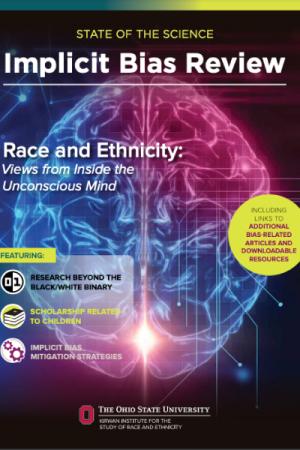
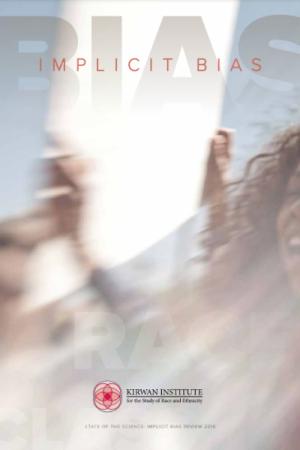
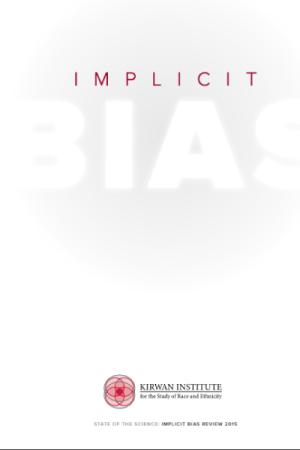
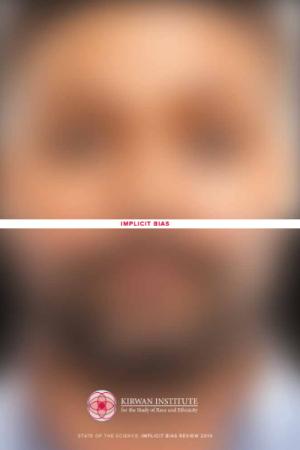
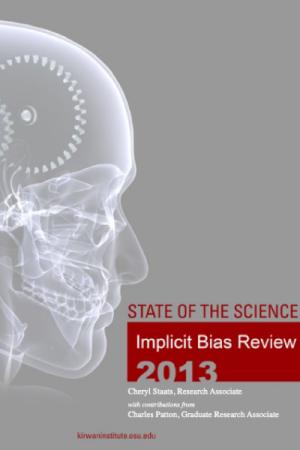
Exit Survey
Exit SurveyLet us know your feedback!